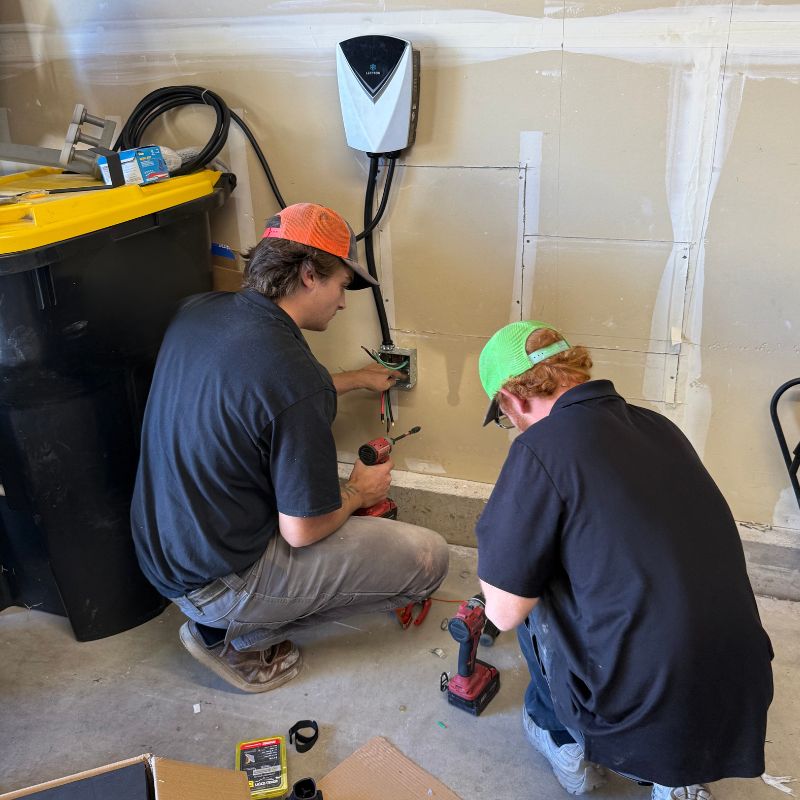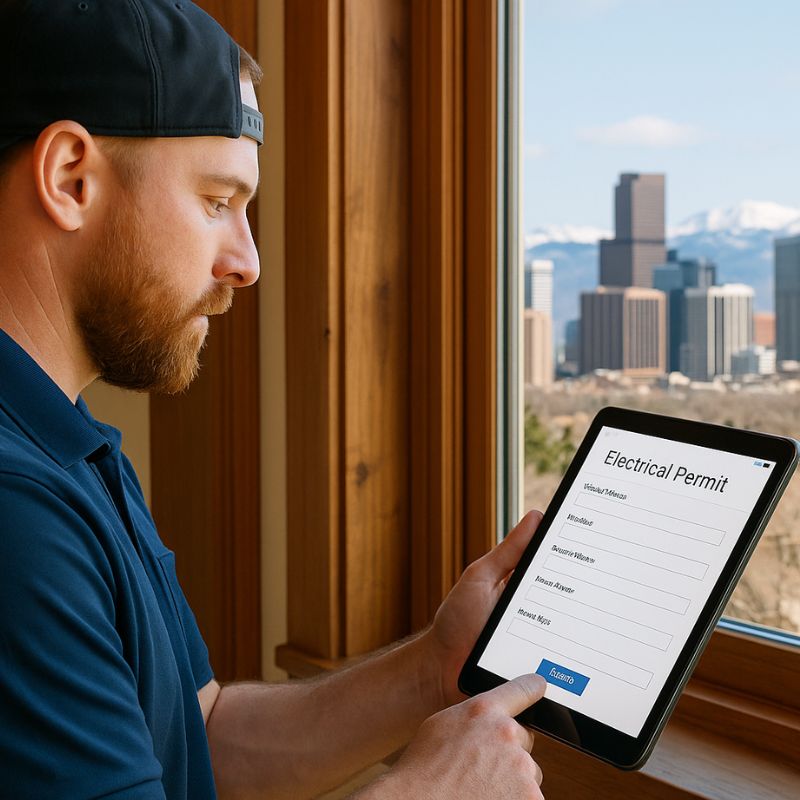Contents
- Testing an Electrical Outlet
- What Is a Multimeter and Why Should You Care?
- Safety First: Before You Test an Electrical Outlet
- Anatomy of a Wall Outlet
- How to Test Electrical Outlet with Multimeter in 5 Steps
- What If You Get Strange Readings?
- Why You Should Test Outlets Regularly
- FAQs About How to Test Outlet with Multimeter
- Ready for a Professional Touch?
Testing an Electrical Outlet
Ever plug something in and… nothing? No zap, no light, no happy beep from your phone? It’s frustrating, and it might mean your outlet is dead, faulty, or just faking its way through life.

Good news: you don’t need to be Nikola Tesla to figure it out.
All you need is a digital multimeter and a healthy respect for electricity.
In this guide, we’ll show you how to test outlet with multimeter safely and correctly, so you can troubleshoot the issue like a pro, or at least know when it’s time to call one.
Whether you’re a DIY weekend warrior or just curious, this step-by-step guide is for you.
What Is a Multimeter and Why Should You Care?
A multimeter is a pocket-sized superhero for diagnosing electrical issues. It measures voltage, current, and resistance to test outlets, wiring, cords, and more. You can use multimeter to test outlet and determine if:
- Power is reaching the outlet
- The outlet is properly grounded
- The polarity is correct or dangerously reversed
In other words, a multimeter is essential for anyone trying to test an outlet without guessing.
Quick Tip: We recommend a digital multimeter—it’s easier to read and safer for beginners.
Safety First: Before You Test an Electrical Outlet
Let’s get one thing straight: you’ll be working with live electricity here. That means one wrong move and you might learn what a taser feels like.
Here’s how to protect yourself before any outlet tests:
- Use one hand to hold both multimeter probes, this prevents current from running through your chest if there’s a shock.
- Never let the probes touch each other when inserted.
- Wear rubber gloves if you’re unsure or nervous.
- Always double-check that you set the multimeter correctly before inserting it into the outlet.
- If things look sketchy, call a professional. Don’t take chances.
Need help? Our team of licensed electricians can troubleshoot outlet problems across Colorado safely.
Anatomy of a Wall Outlet
To test an outlet with multimeter, you need to understand what you’re looking at.
A standard North American outlet has:
- Hot slot (right): the smaller vertical slot
- Neutral slot (left): the larger vertical slot
- Ground slot (bottom): the U-shaped hole
You’ll be inserting probes into these slots in different combinations to check for voltage, grounding, and wiring issues. Ready? Let’s go.
How to Test Electrical Outlet with Multimeter in 5 Steps
Step 1: Set the Multimeter to AC Voltage
Turn the dial to AC voltage mode, typically marked “V~”. Make sure to select a setting that measures at least 200 volts, so you can handle standard U.S. outlets that deliver around 120 volts.
Don’t set the multimeter to DC voltage (that’s for batteries). We’re testing household current, which alternates.
Not sure what to do? Consult your multimeter’s manual before proceeding.
Step 2: Plug in the Test Leads
Insert the black lead into the COM port, and the red lead into the port marked “VΩmA” or similar. The red lead will measure the voltage, while the black one serves as a reference.
You’re now set up and ready to test electrical systems.
Step 3: Check for Power to the Outlet
Here comes the fun part. Insert the black probe into the neutral slot (left) and the red probe into the hot slot (right). This is your first voltage reading.
If the outlet is working, your multimeter will display something close to 120 volts. If not, the circuit breaker may be tripped, the outlet may be faulty, or there could be internal wiring issues.
If you’re not getting a reading, test another outlet first to make sure your meter is working.
Still nothing? You may need to turn off the power and remove the outlet for inspection, but that’s a job best left to a pro.
Step 4: Test if the Outlet is Properly Grounded
Leave the red lead in the hot slot. Now move the black probe to the ground slot (the rounded bottom hole).
Check the voltage again.
- If the reading stays close to 120 volts, your outlet is properly grounded.
- If you get no voltage reading, the outlet may have faulty or missing ground wiring, a serious safety risk.
Testing outlets with a multimeter for grounding can prevent future shocks, fires, or electrical surges.
Need help confirming grounding or fixing a bad one? Book a home electrical inspection with us.
Step 5: Conduct a Polarity Test
Last but not least, let’s check if the wiring is reversed.
Flip the probes: insert the red probe into the neutral slot, and the black probe into the hot slot.
If you still get a voltage reading, it’s a sign of reversed polarity, which happens when someone installed the outlet incorrectly and swapped the hot and neutral wires. This can damage your electronics and create a shock risk.
This is one of the biggest reasons to use multimeter to test outlet, especially in older homes.
What If You Get Strange Readings?
If something’s off during outlet tests, here are a few possible causes:
- Circuit breaker is tripped: Always check your breaker panel first.
- Loose connections: These often show up as flickering power or low voltage.
- Burned-out or old outlet: Sometimes, it’s just time for a replacement.
- No ground or reversed wiring: A serious electrical safety hazard.
Before you turn off the power and dig into the wall, consider calling The Electricians for a quick, professional fix.
Why You Should Test Outlets Regularly
You don’t need to wait for sparks to fly before you test outlets. Periodic testing helps:
- Catch early signs of wiring problems
- Avoid damage to household appliances
- Maintain safe, efficient circuits
- Lower your electricity costs by identifying energy waste
Think of it like a health checkup, but for your home’s power grid.
FAQs About How to Test Outlet with Multimeter
How often should I test electrical outlets in my home?
At least once a year, especially if your house is over 20 years old. High-traffic rooms (like kitchens and bathrooms) deserve more frequent checks.
Can I test outlets with a multimeter myself?
Yes, if you follow all safety procedures and use a digital multimeter properly. If anything looks or feels unsafe, contact a licensed electrician.
What does it mean if there’s no voltage?
The circuit could be off, the breaker tripped, or there’s a break in the wiring. A 0V voltage reading is your cue to investigate further or bring in a professional.
Is reversed polarity dangerous?
It can be. While your lamp might not care, modern electronics and appliances might short or get damaged. Conduct a polarity test to stay safe.
Why use a multimeter instead of a tester plug?
A multimeter gives more detailed data. Plug testers can show basic info, but multimeters allow you to measure voltage and diagnose more types of problems.
Ready for a Professional Touch?
Testing an outlet with a multimeter is a smart first step, but it’s not a full electrical diagnosis. If your outlet fails the test, shows reversed polarity, or just refuses to work, don’t risk your safety.
At The Electricians, we specialize in:
- Outlet installation and upgrades
- GFCI replacements
- Rewiring and grounding repairs
- Electrical troubleshooting across Colorado
Want answers without the guesswork? Contact us or call 720-633-5937 today. We’ll handle the volts, no sparks required.
Related Posts
If you enjoyed reading this, then please explore our other articles below:








